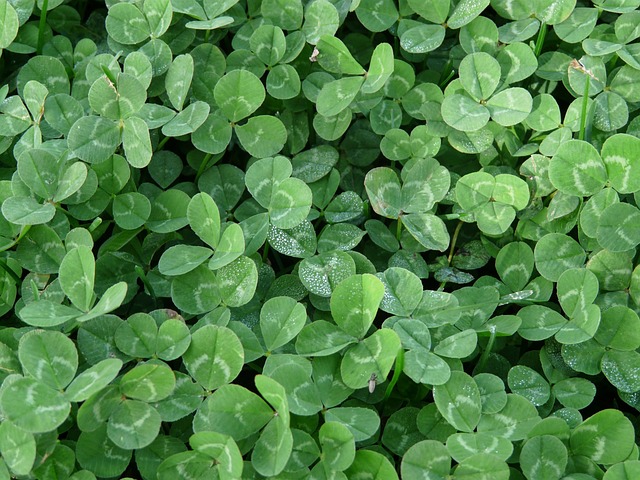Clover mites, tiny arachnids related to spiders and ticks, cause infestations in residential and commercial settings. With rapid population growth during warmer months, early identification of signs like skin irritations, webbing, and frass is crucial. Professional clover mite prevention services and eco-friendly solutions are vital for effective treatment and future prevention, addressing current issues while aiming to prevent return infestations.
Clover mites can be a significant nuisance, causing discomfort and damage to both residential and commercial properties. This comprehensive guide aims to demystify these tiny invaders, offering insights into their behavior and providing effective strategies for prevention and control. From understanding their physical traits and life cycle to identifying signs of an infestation and choosing between professional clover mites removal or eco-friendly solutions, this article covers all you need to know about addressing clover mite issues comprehensively.
What Are Clover Mites? Understanding Their Physical Characteristics and Life Cycle
Clover mites are tiny arachnids that belong to the family Mitidae. Often mistaken for insects, these pests are actually related to spiders and ticks. Measuring just 1-2 mm in length, they possess eight legs, a flat body, and a pair of front arms that resemble claws. Their color varies from light tan to dark brown, making them well-camouflaged among grass and other plant materials.
Clover mites undergo a complete life cycle, comprising egg, nymph, and adult stages. They primarily feed on grasses, but their appetite extends to various plants, including ornamental lawns and gardens. The females lay eggs in the soil, typically near host plants, and these hatch into nymphs that undergo several molts before reaching adulthood. During the warmer months, a single female can produce hundreds of offspring, leading to rapid population growth and the potential for severe infestations. Professional clover mites prevention services and eco-friendly solutions are crucial for managing these pests, especially in residential and commercial settings where effective yet safe treatment methods are essential for eliminating infestations.
Identifying Signs of a Clover Mite Infestation in Your Home or Business
If you suspect a clover mite infestation in your home or business, it’s crucial to identify the signs early on. These tiny pests can quickly multiply and cause significant discomfort due to their irritating bites. Look for telltale symptoms like small red or skin irritations, especially around windowsills, doors, and other entry points. You might also notice a fine webbing in corners or along baseboards – this is where clover mites tend to gather and breed.
Additionally, keep an eye out for dead mites or their tiny dark droppings (frass) on surfaces. Since clover mites are attracted to light, they often congregate near windows, leaving behind noticeable trails of frass. If you observe any of these signs, it’s time to consider professional help. Engaging clover mite prevention services or opting for eco-friendly solutions from a pest control expert is essential for effective treatment and future prevention, ensuring a comfortable living or working environment.
The Behavior of Clover Mites: When and Where They Tend to Infest and Feed
Clover mites are most active during warm months, typically spring and summer, when they proliferate and seek new feeding grounds. They prefer areas with lush vegetation, especially lawns and gardens, where they find an abundant food source in grass and other plant matter. These tiny pests often infest residential properties, commercial spaces, and landscapes, causing significant damage to grasses, plants, and even outdoor furniture.
During their infestation period, clover mites can quickly spread across surfaces, feeding on cell wall fluids from various plants. They are particularly drawn to sunny locations, where they create visible webs and colonies. Professional clover mites removal services often employ eco-friendly solutions to effectively manage infestations without causing harm to the environment or healthy plants. Targeted treatments for residential and commercial properties ensure a peaceful outdoor space, free from these persistent pests.
Effective Clover Mites Prevention, Treatment, and Control Strategies: Professional vs Eco-Friendly Solutions
When dealing with a clover mite infestation, whether in a residential or commercial setting, effective prevention, treatment, and control strategies are paramount. Professional clover mites removal services offer robust solutions tailored by experts with specialized knowledge and equipment. These methods typically include thorough inspections, targeted treatments, and ongoing monitoring to ensure the mites are eradicated and do not return.
In contrast, eco-friendly clover mites solutions focus on non-chemical approaches that minimize environmental impact while still achieving effective control. These strategies may involve physical removal, natural predators, or plant-based repellents. While they might require more time and consistency, eco-friendly methods appeal to those prioritizing sustainable pest management without resorting to harsh chemicals. Whether opting for professional services or eco-friendly solutions, proper identification of the clover mite species and understanding their behavior are crucial first steps in any infestation treatment plan.
Understanding the unique behavior and life cycle of clover mites is key to effective prevention and control. Whether in a residential or commercial setting, identifying signs early on can prevent these persistent pests from infesting and damaging fabrics, carpets, and furniture. For severe infestations, engaging professional clover mite removal services offers swift and eco-conscious solutions. Alternatively, eco-friendly methods can be employed for milder cases, ensuring a safe and sustainable environment while treating the infestation. By combining awareness, timely action, and suitable strategies, it’s possible to reclaim living spaces from these tiny invaders.
